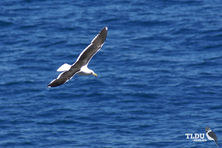
Shoppers Feedback:
Jan 17, 2017
Hello Ros,
I have now paid the invoice, but I would like to write to you just to say a big THANK YOU for getting me the Penguin!
The ChatterMate Penguin became a nice memory for me when I was in New Zealand, and I am so greatful to you for arranging so that I could have it! :-)
Thank you so much!!!!!!!!!!!
Regards,
Malin
Hi Ros,
Many thanks for your very kind email. I really appreciate your prompt reply!
I appreciate your advice regarding the decorations and customs. These are a gift for my daughter’s exchange student family so when she returns home on the weekend I will show her and see if she loves them as much as I do!
Thanks so very much again - I am truly grateful for your kind assistance.
Kind Regards
Bernadette
Ros,
Thanks again for the great customer service. It's a refreshing change!
Best regards,
Trevor
Hey Roz,
Thank you for your emails. Just loved my first order. The cute little Aussie bush critters are going to be used for an office Christmas decoration. My colleagues also liked them and talked about making an order to your site. I'll send you a photo when completed.
I'll be ordering more to send to my daughter's host family in America.
Fabulous service from you.
Kind regards,
Michelle
Thankyou. Order arrived today. One very happy grandson with his new beastly binoculars.
Regards,
Irene
- Home
- Wild Wonders
- Shop
- Aromas of Australia
- Australian Made
- Books
- Book Marks
- Christmas Decoration Sale
- Christmas Decorations
- Clocks
- Drink Holders
- Garden & Outdoor
- Gift Wrapping & Cards
- Home & Giftware
- Jewellery
- Keyrings
- New Products
- Pencils & Pen Holders
- Photo Frames
- Plush Toys
- Plush with Sound
- Sheepskin Rugs
- Stationery
- Stone Carvings
- Toys & Games
- Travel Goods
- Wedding
- Wild Figurines
- Wildlife Safety Products
- Wind Chimes
- Wine Charms
- View All Products
- Wildlife
- Australiana
- Explore
- Contact Us
Kelp Gull

Quick Facts
| Length: | 57 cm |
| Height: | - |
| Weight: | 940 grams |
| Colour: | - |
| Habitat: | Sheltered parts of the coasts such as bays, inlets and estuaries, beaches and reefs on off-shore isl |
| Food: | Fish, crustaceans, but will scavenge when opportunity arises |
| Predators: | - |
| Status: | Critically Endangered in VIC, Secure in NSW, SA, TAS & WA. Not Present in NT & QLD |
The Kelp Gull is a large black-backed gull with a white tail and a large yellow bill with a red spot on the lower tip. It is the second largest gull in Australia. The wing has a wide trailing edge and a small white 'window' in the wingtip. Newly-fledged Kelp Gulls are brown with paler mottling on the hind neck and breast and have a black bill. Immature Kelp Gulls have mottled brown wings and back with a whitish body and an all- yellow bill. The Kelp Gull is gregarious, and tends to roost, feed and breed in flocks.
The Kelp Gull is the second largest gull in the region, being smaller and less bulky than the Pacific Gull and with a less massive bill. Its tail is all white, with no black band.
The Kelp Gull has become established in Australia since the 1940s, with the first breeding recorded on Moon Island near Lake Macquarie in New South Wales in 1958. Their numbers have increased rapidly since the 1960s and they are now common in many parts of the south-east and south-west coasts, and especially in Tasmania. It is widespread in New Zealand, and is found on most sub-Antarctic islands, as well as on islands south of the Antarctic Convergence and the Antarctic Peninsula, South America, and Africa.
The Kelp Gull prefers the sheltered parts of coasts such as bays, inlets and estuaries; also beaches and reefs on off-shore islands. It is likely that the Kelp Gull is in serious competition with the endemic Pacific Gull because of their similar habitat, food and habits.
The Kelp Gull is resident in many parts of Australia, in others it is dispersive although this varies from colony to colony. In some colonies, parts of the population are apparantly resident or sedentary.
The Kelp Gull forages on land or in water, rarely in the air. It feeds mainly on fish and crustaceans, but will scavenge when an opportunity arises. Like the Pacific Gull, the Kelp Gull habitually drops molluscs from midair onto rocks to smash them.
The Kelp Gull nests in loose colonies or scattered single pairs on off-shore islands where breeding birds maintain large territories against other gulls.The nests of Kelp Gulls can be a well-made bowl of plants stems, grasses and seaweeds or a loose pile of material on the ground, near rocks or in a tussock. Both the adults build the nest, incubate the eggs, brood and feed the young.
Kelp Gulls occasionally become entangled in fishing lines, are occasionally illegally shot, and have been poisoned. In New Zealand, the Kelp Gull was regularly eaten by the Maori.
Last Updated: Wednesday 17th July, 2013
BUSH e-TELEGRAPH
Signup for our monthly newsletter the "e-Telegraph"
Quick Links
Home | The Beginning | About The Land Down Under | Wild Wonders | Advertise on Wild Wonders | Christmas Decoration Sale | Christmas Tree Decorations | Drink Holders | Plush with Sound | Stone Carvings | Wildlife Wine Charms | Freebies | Australian Wildlife | Help Our Wildlife | Australiana | Photo of the Month | Explore The Land Down Under | Contact Us | Legal Notices

